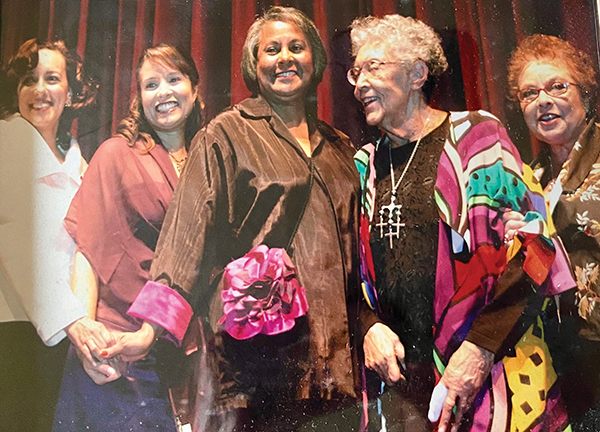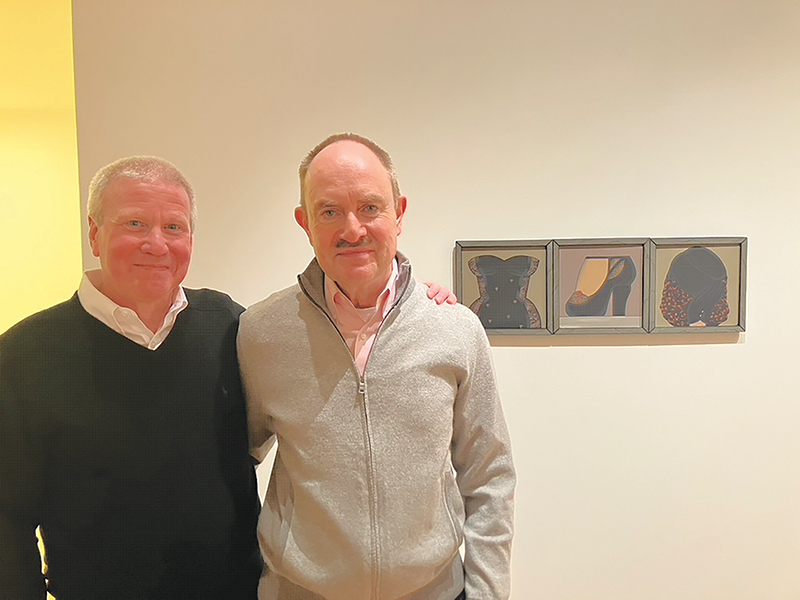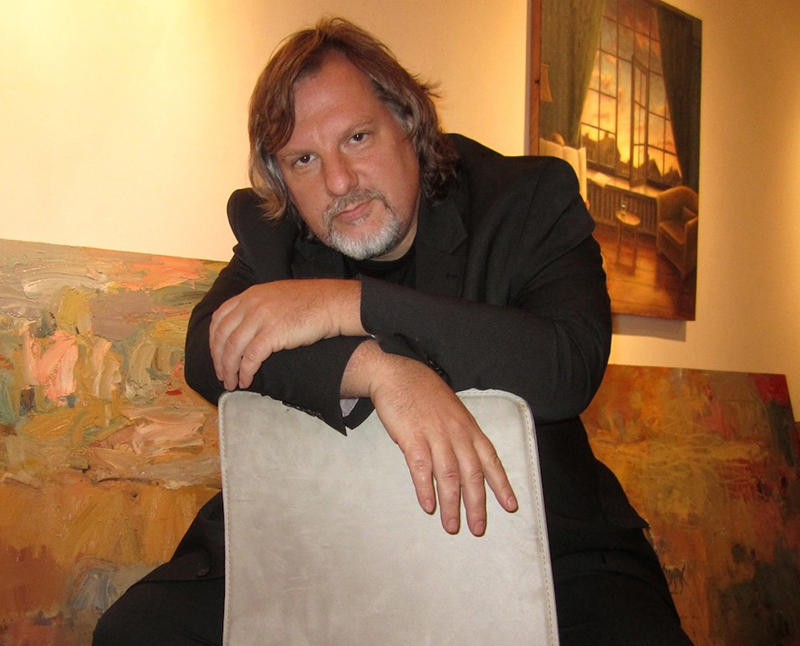Gertie Makes No Little Plans: Chicago Exhibition Weekend 2024, and Beyond

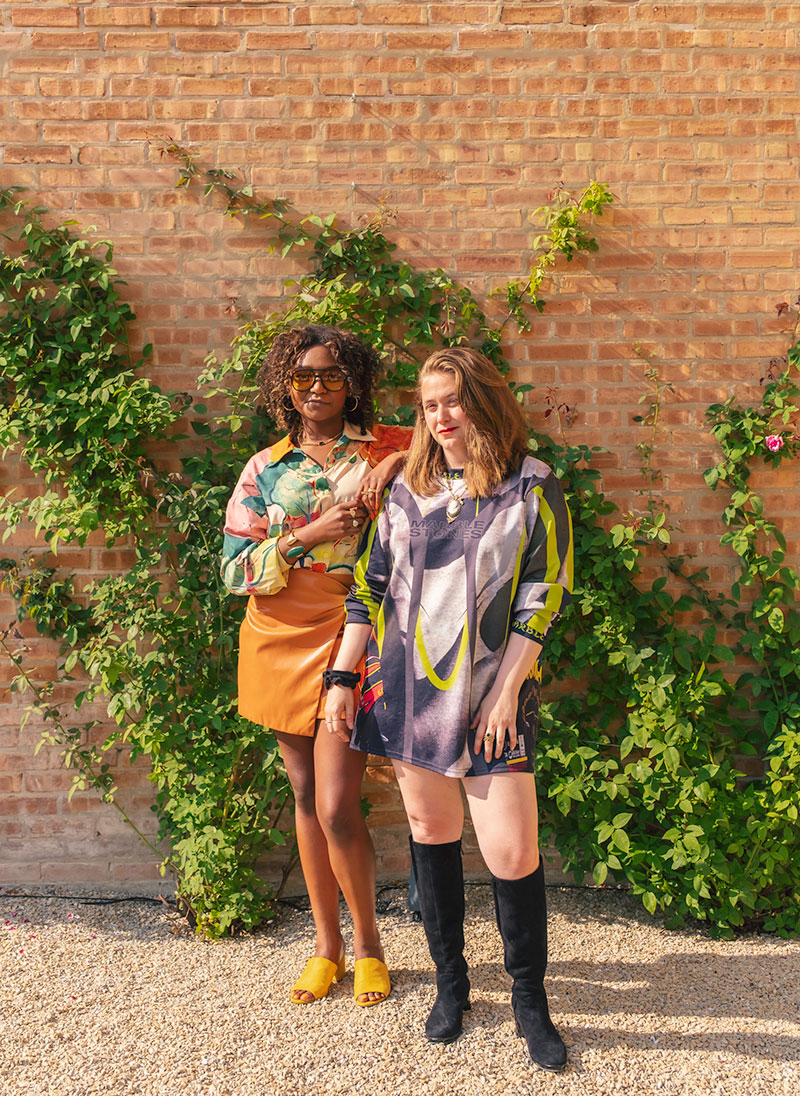
By GINNY VAN ALYEA
I sat down with Abby Pucker, founder and CEO of Gertie, and Chanelle Lacy, Gertie’s Director of Art Initiatives, just over a week out from the opening of the second annual Chicago Exhibition Weekend (CXW), set to take the city’s local art community by storm at a time when the majority of the city’s galleries could use a boost of foot traffic and support as well as signs of life that a future collector class exists. The weekend promises 45+ participating galleries, institutional partners, expertly curated routes to follow, cocktail parties, a night market art bazaar, even a tennis match.
Sitting among white boards covered with rapidly scrawled brainstorms from the Gertie team–the cohort of ladies pulling everything together for a packed four day art weekend planned for October 3–6, 2024–I wanted to find out just what Abby and Chanelle are up to this season and what is planned once the (dinner) party and the art crawls are over.
Following is our conversation on the eve of CXW24. Responses have been edited for clarity.
CGN: Tell me a little bit about Chicago Exhibition Weekend 2024 and what you're hoping to build on for year two.
Chanelle Lacy: CXW is a citywide arts convening that's activating art galleries and creative spaces around the city. I think something really beautiful that typically comes out of an art fair [weekend] is the citywide activation and energy that is circulated in the art world. How do we recreate that synergy without an art fair? CXW is about that, and it's also giving galleries the opportunity to create special programming and exhibitions, knowing that there's going to be an audience and that there's going to be activity. I think so often it feels like an uphill battle to create something without the audience being built into it. CXW gives galleries that opportunity to lean further into their programming, which is really exciting.
Abby Pucker: This stuff is happening all the time–there are openings, there are talks–but I think what we're trying to do is create these centers of gravity for the galleries to activate but also for audiences to understand what's happening. There's a lot of education that has to happen, and people also need to feel included–that's always an issue In the art world. Creating an engaging campaign that also speaks beyond the art scene can bring new people into the fold who might be culturally curious and interested but don't know how to way-find. So CXW is breaking it down and making it easier and inviting. We even did curated routes for people so that they might realize they can follow [an insider’s] route. It is so easy.
CL: We want people to understand that you can plan your day around CXW. On the curated routes, we also have small businesses. Our route curators have selected three to five restaurants, bars, coffee shops or boutiques. From the outside looking in, you're able to see yourself in the art world without having to be tethered to a museum or gallery opening.
CGN: What mission has driven you to work with Chicago’s galleries and creatives?
AP: I think there are certain galleries that don't do the work to really genuinely support their artists, but the vast majority do. All of the things that go into that 50% [split between a gallery and an artist] many are often times warranted, so [Gertie] likes to partner with those galleries and collect work from those galleries, because without them, the artists don't have places to actually accept their work and build their collector base. This is a way we can build sustainable support for galleries and their artists.
CGN: I noticed a description that explains CXW will deepen art world experts’ knowledge of Chicago's art world as well as welcome the “art world curious.” Are there some events that will appeal to somebody who's at one end of the spectrum vs another?
AP: A collection visit isn't necessarily going to appeal to everyone, but it's going to appeal to a lot of people. And then there's that interesting intersection between the two. For [Gertie’s program] EarlyWork and the collection visit, it's been really interesting to see who from Early Work is choosing to attend that collection visit because again, it speaks to their level of interest and, maybe also seeing themselves as a collector, which is definitely a goal.
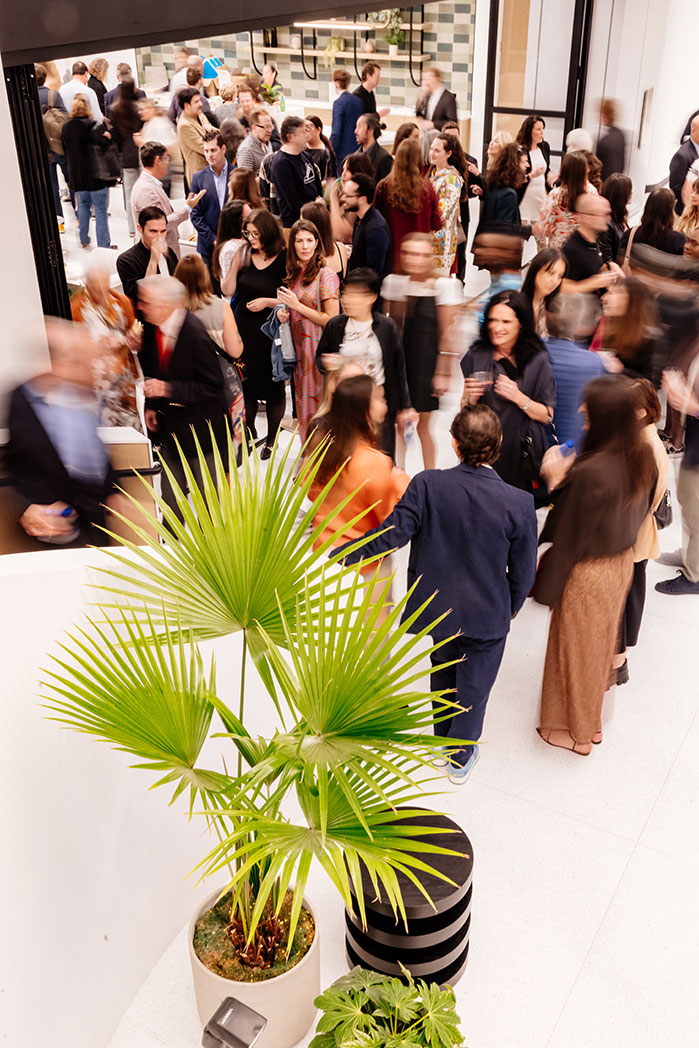
CGN: That can be a tough one. CGN has conducted dozens of collector interviews over the years, and I am always interested when someone will agree to do the interview but they hesitate to be labelled ‘a collector.’ Some have become more comfortable, but others totally back away from it, and they have different reasons for that, but ‘collector’ can be a label I think people just sometimes don't want or they worry about related obligations. Or they might think, ‘I'm not a collector yet,’ even when they have 45 works of art in their home!
AP: There’s such an aura around collecting and what it means and what it implies. And I think that is creating a barrier for younger people to actually see themselves as a collector. People have this idea of what it means and how much you have to spend and the home you have to have. So a lot of the collection visits EarlyWork is looking to do, especially as we amp up programming, is really showing the wide variety of what collecting is. It's aspirational, but also can be really attainable.
I think some collectors we’ve worked with are really excited to see that there's a willing and interested group of people on the other end who want to learn more. We did an amazing collection visit with Nancy Lerner and David Frej. That was so special. They talked about the importance of seeing art in person, that they don't buy anything from A PDF or online. I think we're starting to see signs of those connections and those relationships starting to grow.
CGN: Tell me about Early Work, Gertie’s up-and-coming collector program?
AP: A lot of what we're doing with EarlyWork, which Chanelle runs, is really about building relationships between potential collectors or existing collectors and galleries and also introducing them directly to artists. It's really about introductions and relationships, with context, which I think is really important.
CL: Like Abby said, galleries are small businesses. [For a gallery] developing their audience and extending beyond their existing clients, a lot of their resources–their capacity and staffing–goes towards literally just keeping everything afloat.
AP: A gallery may have two or three collectors who kind of keep things going, and then sometimes they may not be incentivized to necessarily build that. But that's not beneficial for the ecosystem of Chicago as a whole. Gertie is really trying to help them think about the ecosystem as a whole outside of just their own survival.
CGN: There's been an aging issue for a while, and the collectors who have been so important and foundational are most likely not actively collecting. It makes sense they want to share their knowledge and experience with a new generation.
AP: I worked at Sotheby’s. I saw this firsthand. Globally the art world can't just be made or broken by 30 collectors. It is not sustainable. We're seeing it with the crisis that's happening nationally in the art market right now and internationally. I think a lot of what we've been talking to partner galleries about is that's not necessarily the vibe here. [Chicago] can be in a little bubble, which I think in the past has maybe been a disadvantage, because it means we're not part of that system, but now we use this to our advantage and really build something that feels more sustainable, where the middle is prioritized. We're not so beholden to the volatility of what's happening elsewhere.
CGN: Do you see that EarlyWork has a unique identity when considered against other local groups, like the Art Institute’s Society for Contemporary Art, or the MCA’s Emerge? Collectors can be part of multiple groups, but do where do you see EarlyWork fitting? Is it focusing just on emerging art, or is it just beginning collectors and newer galleries?
CL: I think what sets EarlyWork apart is the approachability of it. To be a member of SCA, to be a member of Emerge, you have to already be in the art world or have some sort of understanding of what the art world is, just to even navigate and figure out that that group exists. EarlyWork hopes to educate people and demystify the art world first. It’s approachable. That being said, we see EarlyWork and groups like SCA and Emerge as working alongside each other–not in competition. For instance, in August we hosted an event at the MCA with the Emerge group.
We're also including events and institutions that are not specifically fine art-centric, such as the Joffrey Ballet and Steppenwolf Theater, so that EarlyWork reaches a wider group of people and interest levels.
AP: We have done programming with Emerge and we plan on doing more. And we've talked [with SCA] about doing programming. It's not a competition, it's more like how can we come together and build a stronger community? We see it also as a pipeline. What we're trying to do with EarlyWork is detach it from any one institution or entity or gallery and make it totally agnostic so we can say, do this for a year and learn about what exists in the world. I don't think that people necessarily have to be EarlyWork members forever. I think there's a natural growth and evolution that should happen to create a healthy ecosystem.
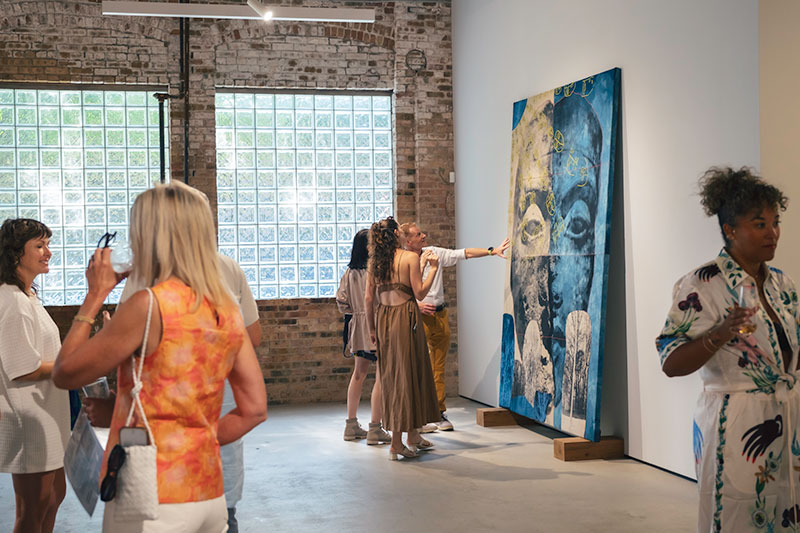
CGN: You've lived in different places. You're choosing to have a very Chicago-centric focus in collecting and everything else. What do you think sets Chicago’s art landscape apart from others around the country or the world?
AP: To me the approachability is I think unmatched, and just the access. In 2023 [Gertie] hosted a series with Blind Barber that we called inter)mezzo. We did it for about nine months and we would have an artist host each time. It was on a Sunday – a day party vibe. We'd have an artist do an installation in the front barbershop of Wine Barber, and then we'd pair them with a resident DJ, who would bring in younger or emerging DJs. Then we would have a theme. I remember Nick Cave and Bob Faust did one with a sort of disco theme, and they rolled literally in their roller skates. People came, including SAIC students as well as admirers of Nick's work. Someone came up to me and was like, ‘I can't believe I'm dancing with Nick Cave right now. That's so cool.’
CGN: Chicago has never been flash in the pan, so artists tend to find the space and focus that is right for them, not everyone else. When I first started at CGN in 2002 so many people pointed out to me how collegial the galleries are to one another. It keeps people being neighbors and friends.
AP: I think what we're getting at here is community. In Chicago there is such a sense of resource sharing and being able to actually call up your neighbor and say, ‘Hey, I need help or I want to share this with you. That's something that I don't think exists as much in New York or LA because there is this competition that's just baked into everything. In Chicago you feel a confidence, ‘I have enough that I can give to you and know that that's not ultimately pulling from my own cup.’
CL: Look at the group exhibition that Mariane Ibrahim presented this summer that had work from other galleries like GRAY, DOCUMENT, Rhona Hoffman. I’m not sure you would see that in other cities.
AP: At last year’s bowling fundraiser for the Renaissance Society [at Seven Ten Social in Hyde Park] I thought, this would never happen in another major city. You would never have all of these different galleries together hanging out. Well, maybe that’s not totally true, because in New York there is a group of galleries that I think really want to have fun, but it was really cool to see here.
CGN: It’s OK, we can talk about Chicago being more fun. That's fine.
AP: You can find pockets of it elsewhere, but I think you wouldn't find the people who are sort of the top of the game in Chicago and the people who are still emerging all in that soup together, which is definitely different. I don't think you're seeing Gagosian and [David] Zwirner and Hauser [& Wirth] all bowling together.
CGN: I think you the veteran galleries that are genuinely excited when new galleries open and people try new things. That's all welcome.
CL: I asked Francine Almeda, who recently opened Tala, about her experience being in West Town. She’s so young, and I wanted to know how has that experience been for her. She said she’s just felt so welcomed and everyone has embraced her with open arms.
CGN: I think this is why you’re right that we need to work even harder to build a base of more collectors, to meaningfully support this community of galleries and artists and institutions.
AP: I think more collectors begets more artists – more artists who are able to stay here as opposed to moving. I think a lot of people see Chicago as a breeding ground, and then we have this sort of brain drain or talent drain. We need more people transacting here.
CGN: Well, it's an uphill battle and a very worthy challenge you're taking on, getting people to collect locally, because that's been a sort of a boogeyman for a long time. You hear people will go to an art fair in New York and buy art from a Chicago gallery but say they bought it in New York. And I think, ‘You live in Chicago! Buy here!’ And don’t wait for the art fairs–go visit galleries on a Saturday morning. It would be great for a younger generation to finally conquer some of that fear of collecting in Chicago.
AP: That's the place where there's insecurity in Chicago. Yes, there are amazing collectors who have built a lot of the institutions in this city. But I think there could be more risk taking to say, I'm going to take a bet on this gallery here, this artist here, collectors seeing how they can help to shape the market. I think what we need more of is security and a little bit of bravado.
CGN: There’s no secret vetting process that takes place in New York that doesn't take place here. Chicago collectors should feel free to ask questions and make their own decisions about what they want to explore and collect.
AP: Exactly. If you already have skin in the game and if you have bought work by an artist, help them succeed and help the gallery bring on new artists. I think collectors here need to understand that that's also their role and responsibility. And that is, I think what I realized personally with my own collecting and by sharing it with friends. At first I was like, I'm not a collector. And then I was like, no, I am. There's a responsibility that comes with that as well.
CL: That's why the title of CXW's kickoff program is titled Embracing Chicago, because it's a movement and an energy that I've felt and many of us have felt over the past several years, this sort of bravado building around really leaning into Chicago–its amazing assets and resources, the lineage and history, the institutions and movements that have all been birthed in this city. Instead of needing to be New York or wanting to be LA or hopping on the trends we're seeing in those cities, it's leaning into what makes Chicago, Chicago. We love this city and we've chosen to stay here, build careers here, open new galleries here. Let's change the conversation and focus on what we already have, versus trying to be something else. CXW is that work that is really embracing our strengths.
AP: Love that. Chanelle said it all.
A few highlights of CXW24:
- EarlyWork x ICI Cocktail Party at Mariane Ibrahim – Oct 3
- EarlyWork x GRAY Cocktail Party & Gallery Grand Opening – Oct 4
- Kickoff Dinner at UMMO and CXW Afterparty at The California Clipper – Oct 4
- Embracing Chicago: Kickoff Program at Murphy Auditorium (Driehaus Museum) – Oct 5
- Nightmarket Art Bazaar presented by Gertie & Refine Collective – Oct 5
Full details about EarlyWork as well events taking place during Chicago Exhibition Weekend, October 3–6, 2024 may be found at cxw24.co and gertie.co/
#
